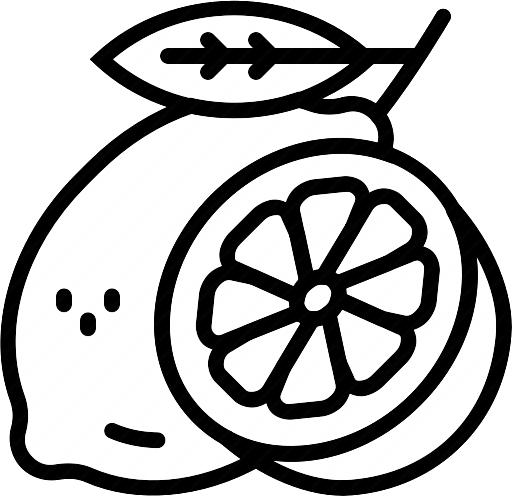
5 minute read
You’re Simply the Zest
You’re Simply the Zest By Colleen Gust
As you may have gathered by our last edition which featured many rhubarb recipes, Kirby and I are fans of tart flavours. I’m one of those people that if there is a lemon garnish on my plate or drink, I’ll eat it. So, this month the focus is on lemons and their uses. We really are fans of the fruit, we even splurged and purchased a lemon and a lime tree at the greenhouse this spring, and they are currently in planters on our back patio. They are setting fruit, which is pretty exciting – I’m really curious to see how big the fruit will get. The leaves when you rub them smell amazing too!
Advertisement
Did you know…. The origin of the lemon is unknown, though lemons are thought to have first grown in northeast India, with the genetics of the lemon showing that it is a hybrid between bitter orange (sour orange) and citron. Lemons entered Europe near southern Italy during the time of Ancient Rome. The lemon was later introduced to the Americas in 1493 when Columbus brought lemon seeds on his voyages. Spanish conquest then helped spread lemon seeds.
In 1747, James Lind’s experiments on seamen suffering from scurvy involved adding lemon juice to their diets, though vitamin C was not yet known as an important dietary ingredient.
With it’s high amount of acid, lemon, like vinegar, is a terrific cleaning agent. The acid in lemons is antibacterial and antiseptic, and it acts as a natural bleach. The citrus smell of lemon is so refreshing and just makes you think “clean” ... just keep in mind that while lemons and lemon juice can do a great job with many household chores, it is not a disinfectant.
While it’s common knowledge that the pith of the lemon causes the bitterness in lemon this is actually incorrect. If you’re ever in the kitchen with a bit of time on your hands and a lemon, try tasting the components separately. You’ll find the pulp sour, the zest a bit floral with just a tad of bitterness, and the pith will have no flavour. What happens though is if you combine the pith and the zest this triggers a chemical reaction between the two which intensifies the very slight bitterness of the zest. Serves 2
2 boneless, skinless chicken breasts - butterflied ½ cup flour salt pepper 1 egg ¾ cup bread crumbs or panko crumbs 5 Tbsp butter Juice of 1-2 lemons (about 1/3 cup), reserving the lemon halves ½ cup chicken stock 2 Tbsp capers, coarsely chopped (optional)
Preheat the oven to 400 degrees farenhiet.
Place each chicken breast between 2 sheets of parchment paper or plastic wrap and pound out to 1/4-inch thick. Sprinkle both sides with salt and pepper. Mix the flour, 1/2 teaspoon salt, and 1/4 teaspoon of pepper in a shallow plate. In a second plate, beat the egg with a fork. Place the bread crumbs on a third plate. Dip each chicken breast first in the flour, shake off the excess, and then dip in the egg and bread crumb mixtures. Heat 1 tablespoon of butter in a large saute pan over medium to medium-low heat. Add the chicken breasts and cook for 3 minutes on each side, until browned. Place them on a sheet pan and allow them to bake for 5 to 10 minutes while you make the sauce. To make the sauce: Over medium heat, melt 1 Tbsp of the butter in the saute pan and then add the lemon juice, chicken broth, the reserved lemon halves, 1/2 tsp salt, and 1/4 tsp pepper, and the capers. Boil over high heat until reduced in half, about 2 minutes. Off the heat, add the remaining 3 tablespoons of butter and swirl to combine.
Discard the lemon halves and spoon on the sauce over the chicken, and serve with a wedge of lemon for additional zip.
Creamy Key Lemon Squares The fact that this recipe contains sweetened condensed milk makes the taste more reminiscent of a Key Lime Square. It’s a little bit different in taste than a traditional lemon square, plus it’s quick and easy to make.
Lemons even played a part of my childhood, for those of you who remember the Nancy Drew Mystery books, they inspired many a child to use lemon juice as invisible ink, developed by heat. I know I did this many a time using a toothpick as my pen!
Lemon juice can be used to increase the blonde colour of hair, acting as a natural highlight after the moistened hair is exposed to sunlight. This is due to the citric acid that acts as bleach. My hairstylist isn’t going to be impressed with me mentioning this as I’m pretty certain she’s had to repair other clients’ hair over the years from this!
Lemon Chicken Piccata This is more my thing than Kirby’s, although he’s happy enough to eat it! While the recipe calls for boneless, skinless breasts I often buy bone-in and do the deboning myself. If I’m feeling lazy, I don’t even bother with that and just increase the cooking time. I make the dish with the capers as both of us enjoy them. ½ cup unsalted butter ½ cup icing sugar ¼ tsp salt 1 cup flour 4 large egg yolks 1 can sweetened condensed milk 3 lemons juiced (about ¾ cup)


Preheat over to 350 degrees Farenhiet. Butter an 8” square baking pan. To make the crust: Beat butter, sugar and salt until light and fluffy. Add the flour and mix until just combined. Press the dough into the bottom of the pan. Prick the dough all over with a fork. Bake until lightly golden – 15 to 20 minutes. To make the filling: In a large bowl, whisk together yolks, condensed milk and lemon juice until smooth. Pour over the hot crust in the pan, and return to oven, and bake until the filling is set – 25 to 30 minutes. Cool completely in pan. Refrigerate until the filling is firm, about 3 hours. Dust with icing sugar and cut into squares.
Colleen Gust is an avid baker and gardener and lives with her husband outside of Regina, Saskatchewan. Kirby and Colleen Gust are publishers of the Manitoba & Saskatchewan Country Register.





